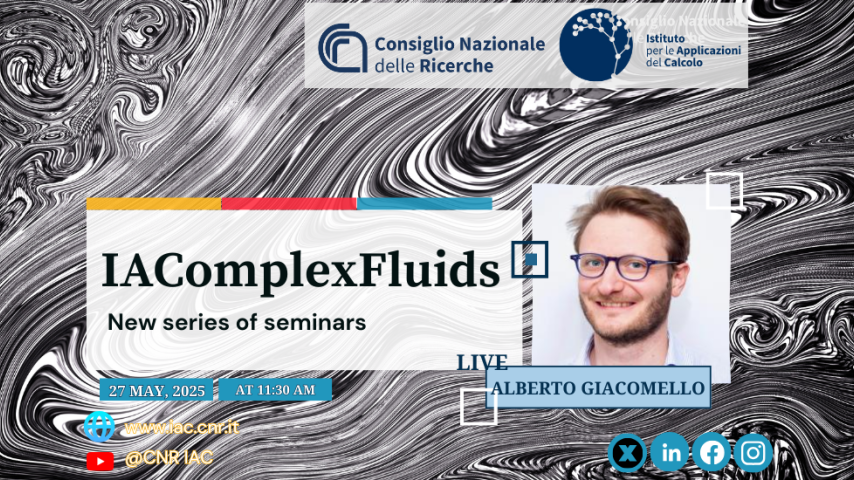
Speaker: Alberto Giacomello
Evaporation, made complex
In hydrophobic nanopores, extreme confinement may induce water evaporation at ambient conditions [1]. Such exotic phase behaviour plays a crucial role in biological phenomena such as hydrophobic gating and in several nanotechnologies, including nanoporous materials for energy [2] and chromatography [3] and single-nanopore technologies [4]. In this talk, theory and simulation will shed light on the thermodynamics and kinetics of evaporation in nanopores and on their dependence on the hydrophobicity, geometry, size, and elasticity of the pores. Controlling such phenomenon, e.g., by surface functionalisation of mesoporous silica gels or by molecular design of metal organic frameworks, opens the door to engineered hydrophobic nanoporous materials which, immersed in water, can store or dissipate energy, realising highly compact mechanical batteries or vibration dampers [2,3]. Finally, the interplay of elastic and capillary phenomena will be discussed, showing that it opens new perspectives in designing materials with exotic properties such as negative compressibility [4].
1- Roth, R., & Kroll, K. M. (2006). Capillary evaporation in pores. Journal of Physics: Condensed Matter, 18(28), 6517.
2- Eroshenko, V., Regis, R. C., Soulard, M., & Patarin, J. (2001). Energetics: a new field of
applications for hydrophobic zeolites. Journal of the American Chemical Society, 123(33), 8129- 8130.
3- Cambiaso, S., Rasera, F., Tinti, A., Bochicchio, D., Grosu, Y., Rossi, G., & Giacomello, A. (2024). Grafting heterogeneities rule water intrusion and extrusion in nanopores. Communication Materials, accepted.
4- Caprini, D., Battista, F., Zajdel, P., Di Muccio, G., Guardiani, C., Trump, B., ... & Giacomello, A. (2024). Bubbles enable volumetric negative compressibility in metastable elastocapillary systems. Nature Communications, 15, 5076.







